
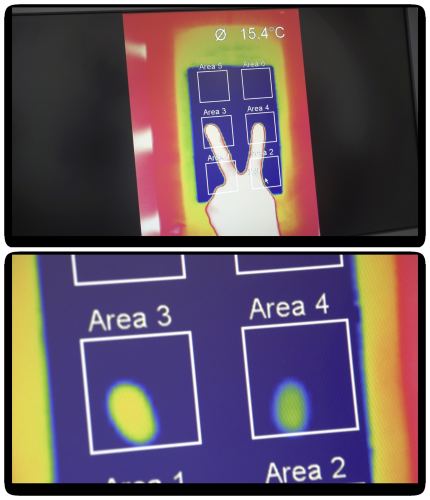


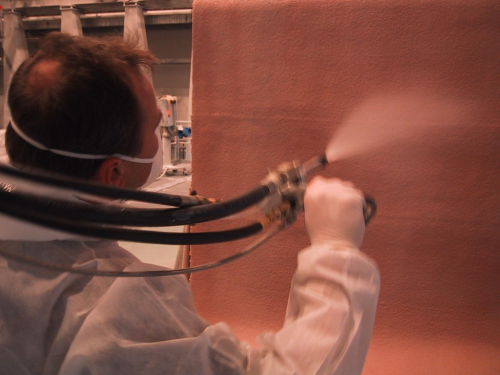
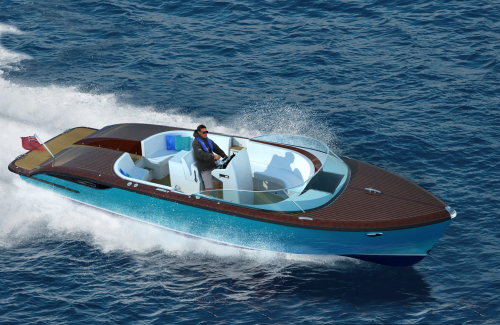
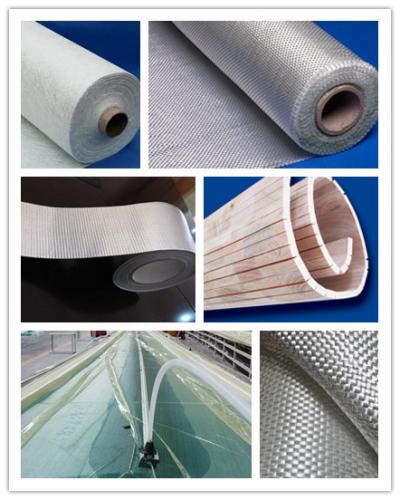
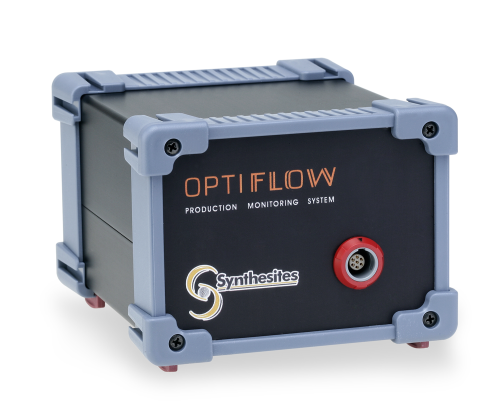
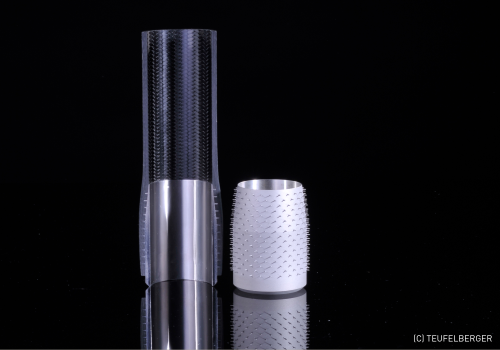
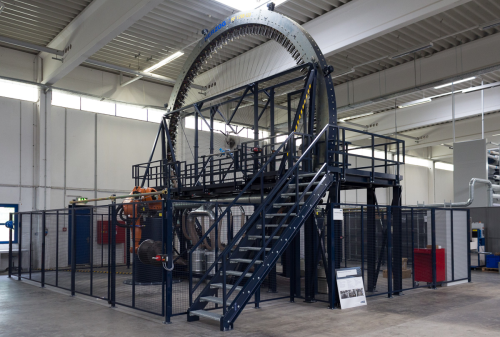
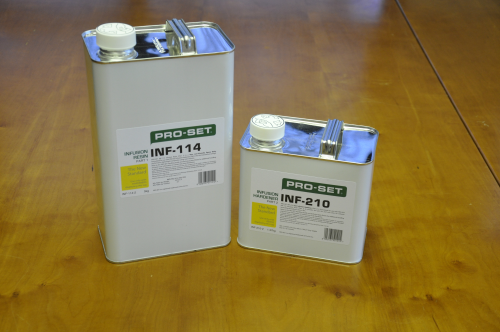
JEC Europe 2014 show preview (Part 1)
Langzauner Stand number: 7.2/P67
Langzauner is offering an automatic mould changing system which reduces the cycle time for this operation to minutes.
The moulds are disconnected automatically, then unlocked, changed, locked and connected again with the press. With this system, SMED (single minute exchange of die) can be achieved, even with very heavy moulds. Another advantage is the consistency of the operation time. An unstable process is one of the most challenging difficulties in production planning, in particular for customers who have to be supplied just in time.
Cycle times and the working speed of the machines also have to be considered, in particular for products with short curing times where the working speed of the press is very important for the efficiency of the unit. Langzauner also offers solutions for large pressing forces and long ram displacements, enabled by a variable speed drive. For example, a press with 600T pressing force and a movement speed of 450mm/sec. can be positioned with a very high accuracy. Pressure storages with mandatory annual maintenance are not necessary. Oil only moves when necessary, which means that oil coolers can be dispensed with. This not only saves energy, but increases the lifetime of the oil. A further advantage of the machine is the low noise - below 85 decibels.
Lantor Stand number: 7.3/H17
Lantor is launching a new nonwoven heating concept - Lantor PowerSHEAT®.
The company says that it is a polyester fibre material with carbon like additives that can be easily impregnated with polyester and epoxy resin systems. That way Lantor PowerSHEAT® can be an integrated part of a structural laminate. It can be connected to an electrical power source which will heat up the veil to a maximum of 160°C. The product is developed for de-/anti-icing applications and for heating of composite production moulds.
The Lantor PowerSHEAT® has a full surface heating profile that will make heating of composite parts fast and energy efficient. PowerSHEAT® is claimed to be easy to integrate in the composite part with wet-in-wet laminating or in closed mould processing, which due to its very flexible nature. A wide range of applications are possible for this product, because of the possibility to use variable voltages, 12 to 230 volts, and the ability to generate a maximum power of 2kW/m2 if needed.
The Lantor PowerSHEAT® will be available in standard widths of 10, 20 and 30 cm. With the PowerSHEAT® Lantor can provide a solid and Plug-and-Play solution for many heating applications in the composite industry.
Michelman Stand number: 7.3/M3
Michelman is introducing new fibre sizings that comply with the Commission Regulation (EU) n°10/2011 repealing Directive 2002/72/EC.
The new solutions are ideal for sizing fibre that will be used in composites destined for applications including coffee machines, food processors and other appliances and kitchen items where food contact compliance is required.
Products being featured include water-based polyurethanes and polypropylene dispersions that are APE and HAP-free, and exhibit good hydrolytic resistance and thermal stability. Michelman offers fibre sizing, binders and lubricants under the brand names Hydrosize®, FGLASS™, Michem® Emulsion, U-Nyte™ and Hydrolube®.
They are formulated for glass fibre, carbon fibre and natural fibres, with specific grades formulated for compatibility with PE, PP, thermosets, PPS, PA, PC and PET/PBT.
Mikrosam Stand number: Q30
Mikrosam offers composite equipment for integrating double carriage (wet and dry) filament winding, high-volume automated production of composite pressure vessels (CPVs), fully controlled impregnating equipment, prepreg slitting, composite machining, and advanced fibre placement and tape laying machines, supported by control systems and software solutions featuring continuous inspection and upkeep of the entire production process.
Mikrosam is highlighting a new system for on-line inspection of the matrix to reinforcement ratio, allowing full control and thorough assessment through the entire production process. Filament winding and impregnation technologies have an advantage with this innovation, as resin pick-up content is a controllable process parameter which can be pre-programmed in the command lines of the winding and impregnating programmes. The system is economic, because it improves quality, saves time, and minimises errors in the composite structure.
The primary application of this innovation is in the aviation and space industries where quality, accuracy and conformity criteria are particularly high.
Mitsubishi Rayon Co., Ltd. Stand number: 7.2/P35
Mitsubishi Rayon Co., Ltd. has developed a high performance intermediate modulus (IM) carbon fibre, Pyrofil MR70, which largely exceeds the performance of conventional IM carbon fibres. Applications are likely to include structural products for aircrafts and cars, and high-end products for sports and leisure.
Mitsubishi Rayon adds that to save the weight, it is necessary not only to improve the material strength but also to improve the material rigidity (modulus of elasticity), which allows making structures lighter and thinner. However, it is difficult to improve both the strength and modulus of carbon fibre at the same time.
The new product, MR70, is an IM carbon fibre which has strength of around 7GPa (1000ksi) and modulus of around 325GPa (47msi) and exceeds MR60H, a conventional IM fibre from Mitsubishi Rayon, by approximately 20% on strength and by approximately 10% on modulus. This high performance was achieved by maintaining precise control of the carbon fibre microstructure and eliminating defects by improving the manufacturing process of the precursor - the raw material of the carbon fibre – and the all manufacturing processes of the carbon fibre itself.
Mitsubishi Rayon has already started production in a domestic plant and started sample shipments to users in aerospace and sports-leisure applications.
Quarzwerke Group Stand number: 7.3/C48
Based on naturally occurring and synthetic minerals such as quartz, wollastonite, kaolin or mica, HPF The Mineral Engineers’ range of high-performance fillers can impart functional or optical properties to plastics. This division of the Quarzwerke Group will highlight three new products.
Silatherm® improves the thermal conductivity of compounds without downgrading their electric insulating properties. Facing an ongoing miniaturisation, typical applications include electronic devices, containing an ever increasing number of components with a high energy density. Silatherm® helps to ensure their long-term reliability by efficiently dissipating the resulting heat.
Featuring a special inorganic coating of very high mechanical and thermal stability, the Silglow® filler absorbs daytime sunlight or light from any other source and emits it in the dark. Polymers as well as colours and lacquers thus receive a long-term luminescence. Typical applications of Silglow® include creative designs and security technology.
Microspar® is a feldspar powder, which improves the anti-blocking properties of films, without significantly affecting their optical properties. Thanks to its high UV transmission, this filler is also suitable for agricultural film production. Finely ground grades of Microspar® were especially developed for dental applications.
Reichhold Stand number: 7.3/M48
Reichhold is introducing new technology based on its proprietary vinyl hybrid resin chemistry for composite applications.
The products include ADVALITE™ liquid and ADVALITE™ hot melt prepreg resins. The hot melt resins are monomer-free and the liquid resins are styrene-free and typically do not contain reactive diluents. Reichhold adds that the ADVALITE™ vinyl hybrid liquid and hot melt prepreg resins exhibit good mechanical properties and temperature resistance up to 200ºC. These resins are cured using standard free radical inhibitors and initiators. This allows significant processing advantages as compared to epoxy resins.
The low exotherm of the resins allow for rapid curing of thick laminates without cracking. The resins also exhibit excellent retention of hot/wet Tg properties. Prepreg composites produced using ADVALITE™ hot melt prepreg resin can be stored at 25ºC for 12 months and can be snap cured at elevated temperatures.
The ADVALITE™ liquid resins can be used in RTM, infusion, filament winding, liquid moulding and pultrusion processes. The ADVALITE™ hot melt resins can be either directly coated or adhesive filmed for fibre impregnation. The resin properties can be tailored to meet processor’s individual specifications and characteristics. Several current automotive applications are in production.
SCIGRIP Stand number: 7.3/N69
Adhesive manufacturer SCIGRIP is launching an enhanced methyl methacrylate (MMA) adhesive that significantly reduces Bond Line Read Through (BLRT) in composite components.
The new product allows customers a greater selection of materials to work with and permits thinner substrates to be bonded without unsightly ‘read through’ lines and distortions on the outer skin of the part. The company says it will appeal to manufacturers of composite structures in the marine and transport markets looking to improve the aesthetics of their components whilst optimising their design, production speeds and costs.
An enhanced development of the low-exotherm adhesive SG230HV, the product demonstrates low heat distortion, low chemical shrinkage, fast controllable cure speeds and continues providing the good surface adhesion that reduces the need for dusty mechanical grinding or peel-ply processes in assembly. SCIGRIP will also be introducing a specialist range of engineering adhesives.
Scott Bader Stand number: 7.3/D32
Scott Bader is launching Crestabond® M1-04, adding a ‘rapid bond’ grade to its range of primerless methacrylate structural adhesives, with a fixture time of only 8-10 minutes.
Crestabond M1-04 is claimed to offer assemblers a reduction of over 40% in the maximum fixture time when compared to the existing Crestabond M1-05 grade, with no loss of bonding performance properties. Crestabond M1-04 has been developed by Scott Bader to increase production efficiencies for high volume parts assembly significantly. With no requirement for a substrate primer and a working time of only 3-4 minutes, assembled parts bonded with Crestabond M1-04 can be moved on to the next stage of production in as little as 8 minutes.
According to Scott Bader test data, Crestabond M1-04 will effectively bond composites, plastics, ABS, aluminium, stainless steel and many other substrates commonly used in industrial applications. This new ‘rapid bond’ Crestabond grade is expected to be of particular interest to automotive OEMs and tier one and tier two suppliers due to its high elongation and toughness, its productivity benefits and its reliable long-term adhesion performance.
The ‘Scott Bader-ATC’ range of POLY-FAIR® modified polyester tooling compounds, now available in Europe, will also be showcased. Crystic Primecoat and Topcoat can be applied to POLY-FAIR products to achieve a high gloss surface finish, enabling the production of a high quality mould using the Crystic tooling system: 15PA gelcoat, VE 679PA skincoat and RTR4000PA rapid tooling back up resin. The addition of the POLY-FAIR range complements existing Crystic tooling products, offering tool makers a full range of materials covering everything from plug manufacturing through to mould production.
Other high performance products featured include the Crystic range of speciality fire retardant (FR) gel-coats and resin FRP laminate systems for applications needing low surface spread of flame with low smoke and toxic fumes (FST). This will include the Class 1 fire rated intumescent non-flammable protective FR topcoat Crystic Fireguard 75PA Excel, which can withstand a direct flame at a temperature of 700°C for over 60 minutes without the laminate behind catching fire.
In addition, Crestapol® high performance urethane acrylate based acrylic resins will also be a key product range promoted. This includes the good FST performance offered by Crestapol 1212, as well as the extreme toughness of Crestapol 1250LV, developed for closed moulding very lightweight motorsports and transportation parts with woven fabrics made from glass, carbon and aramid fibres. According to Scott Bader, Crestapol acrylic resins offer a real alternative to phenolics and epoxies.
Scott & Fyfe Stand number: 7.2/D13
Scott & Fyfe is showing its range of reinforcement textiles for the composite industry. The company serves producers in markets such as mass transit, automotive, marine, wind energy, construction and sports and leisure.
At this years JEC show, Scott & Fyfe is showcasing some new products:
- Polyform Stitch mat – an economical long fibre glass mat that can act as a substitute to CFM
- Polyform Easyflow – a conformable, economical and low profile flow media for vacuum infusion
- Polymat FR – a 100% glass mat for RTM/LRTM production of fire resistant parts
- Easy Form – an innovative glass/aramid hybrid fabric designed for silicone hose reinforcement
- NCF – an extensive range of multiaxial fabrics
In addition, Scott & Fyfe will also exhibit some of its well established and growing product lines:
- Polymat – the range of products for RTM/LRTM production
- Carbon Uni-directional tapes and fabric
- Complex – multi-layer fabrics composed of various constructions
- Pultrusion fabrics – a range of products for pultrusion process
- Easy wrap – a 100% glass fabric specifically designed for external pipe refurbishment
- CIPP – Glass liner fabrics
Sicomin Epoxy Systems Stand number: 7.3/M64
Sicomin Epoxy Systems is showcasing a range of clear, 'green', fire retardant and foaming epoxy resin systems, targeted at manufacturers who are seeking high performance solutions for all composite applications.
SR TOPCLEAR is a mixed epoxy and PU formulation that offers an enhanced, translucent and glossy finish on a wide range of components. Sicomin says that it is a highly versatile, UV resistant and ultra-fast hardening product that can be processed in as little as 10 minutes. SR TOPCLEAR can be applied by brush or spray to multiple surfaces including composites, wood, glass and carbon fabrics, metals and a selection of foams.
GREEN POXY 56 is the latest innovation in environmentally enhanced epoxy formulations and over half of the product’s molecular structure is derived from plant matter. Independent laboratory tests using the Carbon 14 measurement were recently conducted and declared the products green carbon content amounts to 56%. It can be used for lamination purposes, injection moulding, filament winding, hot or cold press processes and casting.
Sicomin has also produced a range of epoxy systems developed specifically for marine, aerospace and civil engineering applications. These products are suitable for laminating, infusion, prepregging, epoxy foaming and coating production methods. Sicomin’s Fire Retardant systems were recently accredited with the ASTM E-84 Class A for the civil engineering industry and the FAR25-853 + heat release rate for the aerospace industry.
Sicomin will also highlight a range of multiple density foaming systems to be used in combination with specialist flexible hardeners. Well suited to industrial, marine and aerospace applications, Sicomin’s foaming epoxy products are specifically designed for the manufacture of strong, high quality parts that require a structural core and bonding of laminate skins.
Sino Composite Stand number: 7.3/Q20
Sino Composite will showcase a variety of vacuum bagging materials, core materials and a series of fabrics. Sinofabric, a Sino Composite joint venture, will launch a series of multiaxial fabrics, chopped strand mat, woven roving and hot melting scrim cloth.
Sino Composite supplies tooling materials, fabrics, core materials, mould release agents, additives, adhesives and equipment to China's composites industry.
SGL Group – The Carbon Company Stand number: 7.2/M19
SGL Group - The Carbon Company - is presenting carbon fibre-based product solutions for strategic growth industries including automotive, sports and industrial applications. Products and applications along the entire value chain will be on display, from precursors and carbon fibres, fabrics, braided products and prepregs to finished structural elements.
SGL Group will debut its most recently developed product, a thermoplastic-compatible heavy-tow carbon fibre, which is essential for producing fibre composite materials with a thermoplastic matrix. A new surface coating (sizing) has been developed to optimally bond the carbon fibre to the thermoplastic matrix. The special properties of carbon fibre, such as high strength and stiffness, are thereby fully transmitted to thermoplastic components.
SGL Group adds that with this new product, it is introducing a carbon fibre to the market that is specifically made for material systems with a thermoplastic matrix. Its enhanced overall performance opens up new fields in which our clients can apply high performance composite materials based on carbon fibre reinforced thermoplastics.
Thermoplastic fibre composite materials generate new applications for the consumer goods market in industries such as electronics and home appliances as well as in series production in the automobile industry. Short cycle times in production and weldability of components significantly contribute to increased efficiency. These materials are also easily repaired and recycled.
Spintech LLC Stand number: P56
Spintech, LLC provides advanced shape memory polymer tooling technologies for composite manufacturing and structural repairs in aerospace, automotive, defence, energy, racing, and sporting goods markets.
The company says that its Smart Tooling technology allows it to provide companies with configurable, reusable tooling for fabricating composite parts with complex geometries and/or trapped features that drastically reduce labour and capital costs, while dramatically increasing production rates. There are two primary Smart Tooling product families: Smart Mandrels and SMP Bladders.
Smart Mandrels™ provide composite manufacturers with a dramatic reduction in cost for producing composite parts that involve complicated mandrel removal. Smart Mandrels are formable above a transition temperature and become rigid when that temperature drops, accommodating composite layup and product curing. When heated again above their transition temperature, the Smart Mandrel goes back to its ‘memory shape’ and can be easily removed from the finished part.
Shape Memory Polymer (SMP) Bladders operate first as a mandrel and later as inflatable bladders. SMP bladders first provide a rigid, durable surface for composite layup. After being placed into a curing mould and elevated above the SMP Bladder’s transition temperature, it then becomes a flexible and inflatable bladder that can firmly push the part against the interior of the curing mould. Once the part is cured, the SMP Bladder is depressurised and easily removed, reformed, and ready for the next composite part lay-up.
Smart Tooling technology results in significant cost savings in composite part production. A documented case study shows a 69-79% cost savings over the three prevailing competitive production methods – metal multi-piece mandrels, ceramic wash-out mandrels, and silicone bladders over machined foam.
Synthesites Stand number: 7.2/Q62
Synthesites is presenting an intelligent process monitoring system for the complete real-time monitoring and control of composites manufacturing with closed moulds, autoclaves and ovens. Resin cure (OPTIMOLD), resin flow (OPTIFLOW) and temperature are being monitored with a single program (OPTIVIEW) using a large variety of durable and disposable sensors. Using special modules it is possible to monitor in real-time resin’s Tg, degree of cure and viscosity or faulty conditions such as high exotherms, wrong mixing ratio or resin aging in the mould cavity, in the die, at the feeding lines or in the resin pot/bath.
For example, the industrial use of OPTIMOLD in a high-speed RTM production decreased the cure cycle time by 40%. OPTIMOLD and OPTIFLOW individually have been already used successfully in RTM, LightRTM and vacuum infusion and can be readily used in other processes such as OoA, filament winding and SMC. Synthesites says that it has installed systems in manufacturing industries in aerospace, automotive, wind energy and other industries, as well as, in research centres and Universities.
Technical Fibre Products Ltd Stand number: 7.3/C47
Technical Fibre Products Ltd, is showcasing its latest developments including its lightest nonwoven carbon veil at 2 g/m2.
TFP says that this and its other ultra lightweight materials are the ideal candidates for use as a carrier or support for fragile materials or adhesive films, facilitating uniform application of the adhesive with a minimum associated weight addition. New developments also include an extended range of lightweight thermoplastic veils including PEEK, polyamide, polyester, PEI and PPS. TFP says that its thermoplastic veils can improve the fracture toughness of a composite by reducing microcrack propagation when incorporated as interlaminar layers.
TFP will also be exhibiting its Optiveil™, Optimat® and Tecnofire® materials which are specifically designed for the surface engineering of composites. Optiveil™ and Optimat® are claimed to be the ideal choice for composite surfacing solutions. The uniformity of fibre dispersion and resin uptake delivers a high quality surface finish whilst fibre type can be selected to impart additional functionality such as conductivity, EMI shielding and corrosion and abrasion resistance. Tecnofire® also provides surface functionality, delivering highly effective passive fire protection for composites without compromising the integrity of the structure.
Teufelberger Composite GmbH Hähl GmbH Stand number: 7.2/P67
Preform and RTM parts manufacturer Teufelberger is presenting its latest CFRP drive shaft development based on the T-IGEL® connection technology in co-operation with CFRP manufacturer Hähl GmbH at JEC.
T-IGEL® technology allows for a multi-axial form fit connection between a fibre composite structure and a metal flange (steel, aluminium) over a fully-automated process of applying an array of tiny metal pins onto the metal surface. The company says that it outperforms traditional hybrid connection technologies with regards to connection strength, failure predictability, fibre damage and process costs.
Teufelberger is exhibiting the proprietary metal-composite connector for hybrid composite structural parts in two different versions of lightweight shafts. The first version targeting electric power train applications is based on a combined braided and filament wound carbon fibre structure. In combination with a short-cycle thermoset RTM process the hybrid metal-composite shaft was designed for a fully-automated, high volume production environment. The CFRP-metal structure can be used with standard shaft joints and couplings.
The second version was cooperatively developed with German metal and CFRP manufacturer Hähl GmbH and is targeting high torque requirements in industrial applications. Hähl’s Cylite® wet filament winding process in combination with Teufelberger’s T-IGEL® flanges are extending limits in metal-composite load transmission, say the companies. The low-maintenance Cylite® Torque Shaft technology was designed to convey up to 10MNm of torque while saving up to 55% in weight compared to the full metal design and saving up to 20% in weight compared to alternative CFRP solutions in wind energy generators.
During JEC the companies will exhibit a functional demonstrator part of both versions on a joint stand with Austrian composite press manufacturer Langzauner GmbH.
ThyssenKrupp Stand number: 7.2/M35
ThyssenKrupp is demonstrating its capabilities in carbon fibre reinforced plastics (CFRP). Five of the Group’s six business areas are active in this area. Last year the Group opened its own TechCenter Carbon Composites in Kesselsdorf near Dresden, Germany as a centre of excellence for the development of this technology.
The TechCenter Carbon Composites was established as an extension of ThyssenKrupp’s CFRP development activities. The solutions developed there will benefit all users of CFRP in the ThyssenKrupp Group. A key area of the centre’s work is the development of production and simulation technologies for a broad range of materials, including hybrids of steel and CFRP. The TechCenter has the equipment and facilities to simulate production-ready manufacturing processes and produce prototypes and small production runs.
Examples of current research and development projects on display at JEC will include the new lightweight wheels from ThyssenKrupp Carbon Components, a CFRP-steel part from the InEco project, shipbuilding components, and a CFRP steering column.
As a diversified industrial group, ThyssenKrupp has expertise in both the use and manufacture of CFRP parts. In naval shipbuilding, for example, ThyssenKrupp’s know-how covers the complete production chain for CFRP components, from design and simulation to quality assurance. The Materials Services business area is stepping up its supplies of composites to aerospace companies and aircraft manufacturers. This is an area in which custom processing and appropriate storage of composite products and materials is gaining in importance.
ThyssenKrupp System Engineering, part of the Industrial Solutions business area, has moved into production of composite parts with its Lightweight Solutions division. ThyssenKrupp System Engineering is also a leading supplier of dies, production equipment and automation systems for CFRP parts. Customers include automotive OEMs and aircraft manufacturers. In the Components Technology business area, ThyssenKrupp is developing a variety of lightweight chassis and steering components.
In 2012 ThyssenKrupp established ThyssenKrupp Carbon Components GmbH as a joint venture with a spin-off from Dresden University of Technology. The company produces CFRP wheels which are 30-50% lighter than conventional alloy wheels.
Toho Tenax Stand number: 7.3/M17
Toho Tenax, the carbon fibre and composites operation of the Teijin Group, is launching Tenax carbon fibre filament yarn with a new tailored sizing for thermoplastic and high-temperature applications. The commercialisation of Tenax® E HTS45 P12 12K 800tex and Tenax® E IMS65 P12 24K 830tex is planned for this year. Toho Tenax adds that both new fibre types will be produced at its German production site in Oberbruch and will be available globally.
According to the company, Tenax® E HTS45 P12 and Tenax® E IMS65 P12 are compatible with high temperature thermoplastics (for example, PEEK, PPS and PEI) as well as for lower temperature matrices such as polyamide based systems (PPA, PA12 and PA6). The P12 sizing also allows low viscosity and in-situ reacting thermoplastics to be combined with Tenax® carbon fibre.
Both fibres are claimed to be processed easily into a variety of textiles such as woven fabrics, multiaxial fabrics, commingled yarn and 3D fabrics. Furthermore, they can be used for pultrusion and prepregging processes.
Toho Tenax says that the new yarn completes its portfolio of short carbon fibre for thermoplastic injection moulding applications.
Based on these new specialised carbon fibres, Toho Tenax is successfully manufacturing thermoplastic unidirectional prepreg tapes. Tenax® TPUD has already been selected for a variety of aerospace developments and industrial programmes.
VELOX Stand number: 7.2/F8
VELOX has expanded its Asahi Kasei Plastics EUROPE offer with Leona™. VELOX GmbH is the exclusive distributor in France and Scandinavia for the products.
Leona™ 90G & 91G Series (polyamide 6/6+6i) resins are based on partially aromatic polyamide copolymers. VELOX says that they offer good visual stability, high modulus (>19 GPa) and minimal isotropic shrinkage whilst maintaining dimensional accuracy and low post-mould warpage. Further advantages are good weatherability and vibration-dampening characteristics.
The 90G Series is a glass fibre-reinforced material, whereas the 91G Series is glass fibre and mineral-reinforced. The 90G Series offers easy processing at a low mould temperature (90°C) while enabling high quality finishes, easy colourability and good flow characteristics even when manufacturing thin-walled, complex parts. A further advantage could be a reduction in cycle time.
The Leona 90G compounds are highly UV-stable, exceeding an extensive spectrum of automobile manufacturing norms, and provide good mechanical stability even in a conditioned state. For potable water applications the Leona has KTW, WRAS, ACS and W 270 approvals. For hot water applications it has WRAS.
Asahi Kasei Plastics developed Leona™ resin with 60% glass fibre reinforcement to solve the challenges faced by the Ford Motor Company in 2012 when designing longer register vanes. The properties of Leona™ 90G60 resin met Ford’s requirements for high strength and high modulus (stiffness), while at the same time providing the finished part with a Class A surface notwithstanding the considerable glass-fibre content.
Victrex Polymer Solutions Stand number: 7.2/F41
Victrex Polymer Solutions is showcasing how VICTREX PEEK high-performance polymers address the key interests of the oil and gas, aircraft and automotive industries, where there is an ongoing drive to implement durable, efficient or lightweight solutions for a variety of challenging applications.
Victrex is emphasising the potential of thermoplastic-matrix composites and illustrating the potential for hybrid processing technologies, for example, relating to the manufacture of hybrid structures, to revolutionise the manufacture of complex composite components.
According to the company, in order to achieve a competitive advantage, many industries are forced to find ways to replace metals or other materials that have reached their limits in certain applications and environments. Victrex says that its high performance thermoplastics help customers turn challenging application requirements into genuine added value. Victrex will highlight key applications such as, clamps, seals, connectors or gears that are already making a real difference in real applications, adding value and efficiency in some of the most challenging environments.
Wessex Resins & Adhesives Stand number: 7.3/D25
Wessex Resins & Adhesives is introducing the new standard PRO-SET epoxy systems. The company says that it has completely overhauled the chemistry, pricing and marketing of its PRO-SET line of advanced composite epoxies.
The entire line has been streamlined, adding many custom formulations to the standard product range, to form a cohesive and logical combination of products. Each PRO-SET formulation has the latest in epoxy chemistry, making it easier for customers to select the best epoxy for the project at hand. Price has been removed price as a concern in the hardener selection equation because all but speciality hardeners are priced the same within each system, regardless of cure speed.
Wessex Resins & Adhesives adds that it has reformulated the PRO-SET line for enhanced performance, adjusting the chemistry to allow 3:1 mix ratios across the board in the laminating and infusion categories. PRO-SET resins can now be chosen by viscosity and hardener chosen by speed. This improvement allows engineers and fabricators to select a combination that best suits their specific project and processes.
PRO-SET epoxy products are organised in four distinct categories: laminating, infusion, tooling and assembly adhesives. All products have been given the category prefix LAM, INF, TLG or ADV, ensuring the compatibility of resin and hardener selections.
The new standard PRO-SET epoxy combinations are claimed to offer solid performance at room temperature cure and advanced physical properties and thermal properties with post-cure. New standard PRO-SET epoxies are not compatible with previous formulations. All new product labels are clearly marked with a yellow square indicating they are part of the new line. ♦
